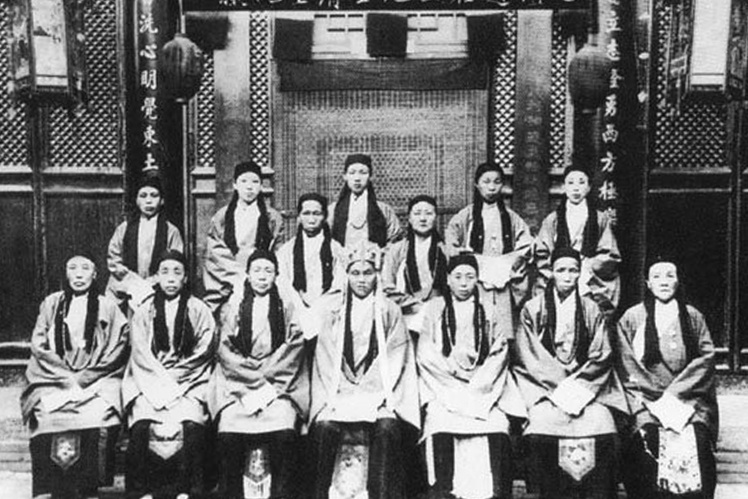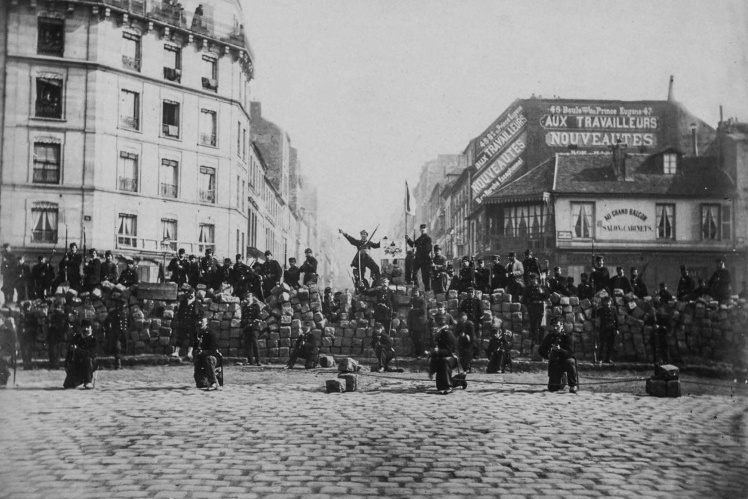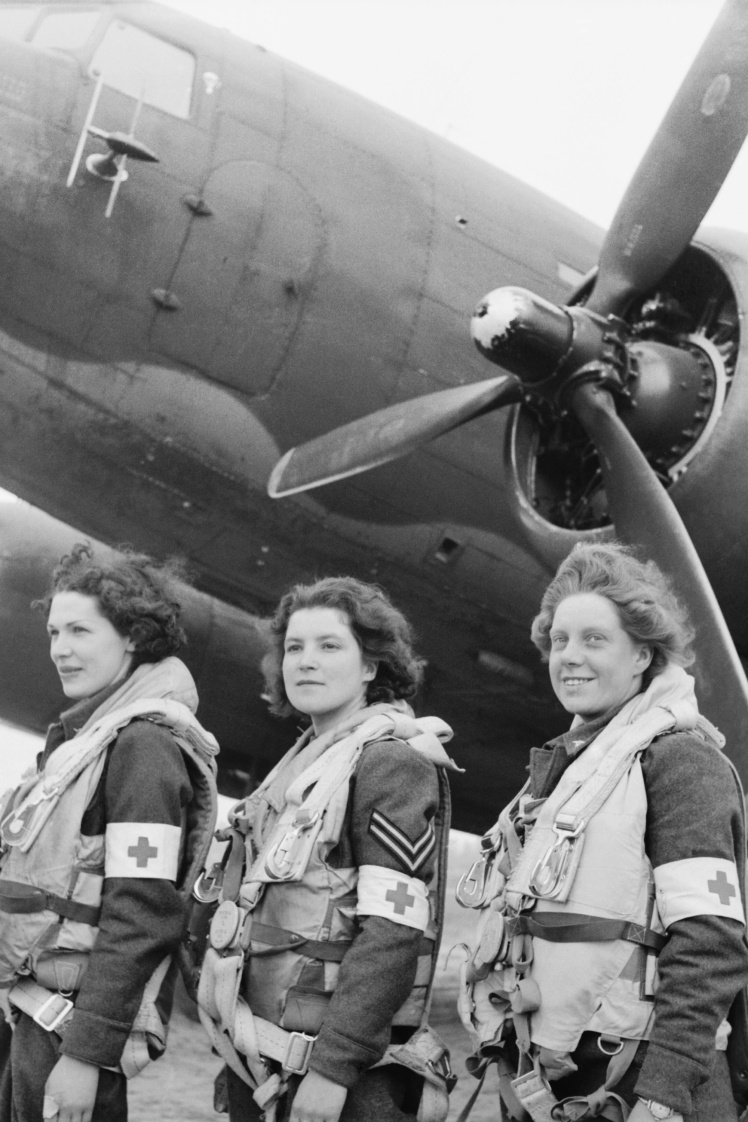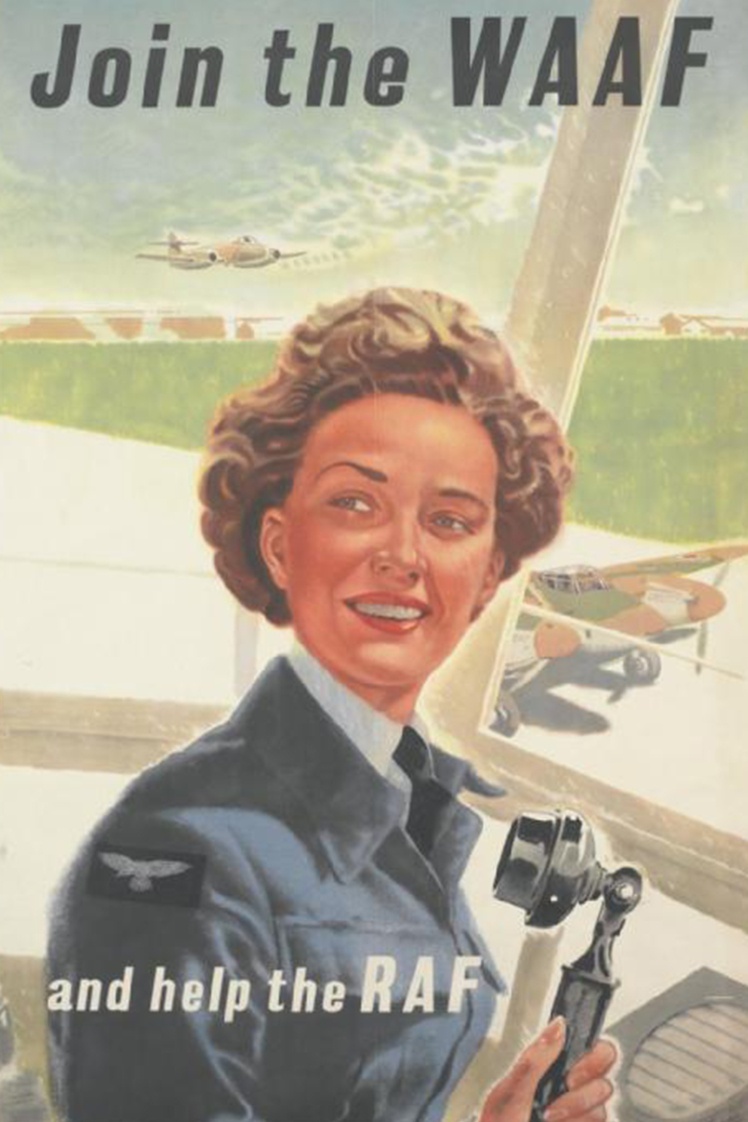Modern mobilization and women volunteers
For the first time, the modern idea of mobilizing the population for war appeared in Prussia in the middle of the 18th century. Prussian King Frederick II was one of the first to look at the army as a large coordinated mechanism. If at the beginning of the 18th century, the army of a European country could number 20 thousand people, then already during the Napoleonic Wars they became much larger — from 100 thousand, and sometimes more than half a million. Such an army required complex logistics and many non-combat positions. Mobilization could solve these problems. Women were not drafted in the 19th and 20th centuries in Europe. In general, they could take part in hostilities in three cases:
- Some women pretended to be men to enlist in the army. There are hundreds of such documented cases around the world. For example, the story of Joanna Zhubr, who was born in the Ukrainian town of Berdychiv, is well-known. In 1808, she pretended to be a man and enlisted in the army of the Duchy of Warsaw. And already in 1809, she took part in the war against Austria, where she was to receive the Virtuti Militari cross for bravery on the battlefield. When the command found out about her true gender, Joanna was denied the award, but she continued her service. And in the end, she received the Virtuti Militari cross for taking part in Napoleonʼs campaign in Russia.
- Many female volunteers were in various guerrilla movements and irregular armies. For example, the fighting group "Red Lanterns" during the Boxer Rebellion in China in 1900. Or the Womenʼs Legion which was part of the forces of the Paris Commune. Although, even in these cases, due to prejudice, they tried to prevent women from participating in hostilities. The main task of the Womenʼs Legion was to catch deserters, they were officially forbidden to go into battle. However, in May 1871, when fighting began in Paris between the republican army and the Communards, the Womenʼs Legion still took part in the street battles.
The Red Lanterns are a fighting group from the time of the Boxer Rebellion in China, circa 1900. Barricades in Paris, March 18, 1871.
Getty Images / «Babel'»
- Women served as nurses. For the first time, women were taken into service precisely in Napoleonʼs army, when ambulances were formed — mobile medical teams of three surgeons and nurses, who quickly provided first aid to the wounded in field conditions. During the Crimean War, the British nurse and social activist Florence Nightingale organized a unit of Sisters of Mercy who worked in field hospitals. And developed standards of sanitation, according to which they had to work. After the appearance of Nightingale at the front, mortality in British hospitals decreased from 40-42% to 2-3%. Returning to Britain, Nightingale, already in the status of a national heroine, lobbied for military medical reform, which allowed for the creation of a modern hospital system. The Sisters of Mercy often worked in combat conditions and died, but were not formally military and did not receive awards.
Florence Nightingale at the military hospital in Scutari, Romania. Engraving of 1880.
Getty Images / «Babel'»
Women in the First World War
By the beginning of the First World War, most countries already had their own organized corps of nurses, whose service was equated to military. For example, more than 3,000 nurses served in the Canadian Armed Forces, 328 of them received awards from 1914 to 1918, and 46 died on the battlefield.
The unprecedented scale of the First World War forced various countries to review the policy of mobilization in general and women in the army in particular. Already in the first years of the war, it became clear that there was a shortage of workers in the rear, even at military strategic enterprises. However, women were still not forcibly mobilized. For example, in Britain, women went to work in defense enterprises voluntarily — there women were paid at least twice as much as in any civilian factory. They worked mainly in the production of projectiles. The British called these women "canaries" because their skin turned yellow from toxic chemicals, and many died.
Towards the end of the war, when there were fewer and fewer men left, women in Britain began to be officially recruited for military service for the first time — in the Womenʼs Army Auxiliary Corps. From January 1917 to November 1918, almost 57 thousand women were recruited into the corps. They chose one of four directions — clerical, medical, mechanical, or culinary. Women were supposed to replace men in administrative positions in the army, but they were not accepted for combat.
Queen Mary inspects the Womenʼs Auxiliary Corps in Aldershot. She is followed by King George V.
Getty Images / «Babel'»
Some women continued to make their way onto the battlefield using the classic method of impersonating men. For example, in 1912, the Serbian Milunka Savic came to the mobilization point instead of her brother. She fought in the Balkan War, where only after being wounded in 1913 did the command find out about her gender and allowed her to continue her service. Savic went through the First World War, received many Serbian military awards and even the French Legion of Honor.
In the meantime, the first woman in military aviation appeared in France — Marie Marvingt. Even before the First World War, she was interested in aviation, she received a pilotʼs license in 1910. In 1915, she joined the army. The command immediately knew about her gender, but considering the fact that there were, in principle, very few people who could lift the plane into the sky, they turned a blind eye to it. Marie received the Military Cross for the successful bombing of a German military base.
French postcard depicting French aviation pioneer Marie Marvingt, the first female combat pilot of World War I, at the controls of her Antoinette monoplane, circa 1910.
Getty Images / «Babel'»
The Second World War and the first mass mobilization of women
The Second World War surpassed the first in terms of scale, so countries had to face a shortage of men, first in the rear in production, and then in military service. They solved this problem in different ways.
USA
For all the years of the Second World War, the United States never began to recruit women for full-time service in the army. Instead, they remembered the British experience of the First World War and in 1942 created a separate Womenʼs Army Corps. The service was taken voluntarily, during the entire war, more than 150 thousand women joined the corps. After training, recruits received various specialties — switchboard operators, drivers, mechanics, stenographers, military mail couriers. But they were not taken into battle. Even women who repaired and maintained weapons and equipment could not be transferred to a combat position to use the same weapons.
This policy is associated with the fact that there was a strong anti-war sentiment in American society throughout the war. The absolute majority of women who went to serve in the WAC or work in defense enterprises were unmarried. Kindergartens in the USA were not widespread, Americans were hostile to the very idea of non-home education. At that time, only 15% of married women in the US were working somewhere, Americans were mostly conservative in this matter. Therefore, the authorities, fearing protests and public condemnation, made a principled decision to build such a system in which most American women would stay at home.
Women of the 149th Postal Headquarters Company of the Womenʼs Auxiliary Corps on duty in North Africa, 1943.
Getty Images / «Babel'»
Although, if the war dragged on, perhaps the command would have to reconsider this approach. In 1943, the War Department issued a manual, "You Must Be in Shape," urging women in the WAC to be physically fit in case of military service. In addition to exercise, the manual included advice on hygiene, skin care and make-up in the field.
USSR
The Soviet Union pursued a completely different policy regarding women in the army. In 1941 alone, the Soviet armed forces lost more than 3 million people. Therefore, the mobilization of women began already in 1942. Unmarried people under 25 years of age with an education of at least seven grades of school were invited. They mostly replaced men in the positions of radio operators, telephone operators, drivers, cooks, clerks, forwarders and military mail workers.
There was one exception, when women were mobilized specifically for combat positions — Air Defense. In total, 490,000 women were mobilized in the USSR during the Second World War, of which 177,000 served in air defense.
Female volunteers were recruited separately for combat positions — in total there were a little over 220 thousand of them, they served mainly as riflemen and mortarmen. And 102,000 women are most often snipers. Soviet women also served in the Air Force, there were three separate womenʼs aviation regiments. At the end of the war, more than 70,000 women in the USSR held officer ranks.
Soviet sniper Lyubov Makarova on the Kalinin Front, 1943.
Getty Images / «Babel'»
Britain
A similar policy, although not so radical, was in Britain. Due to constant bombing and attacks by German aviation, there was a shortage of personnel in the air defense units. Therefore, women were allowed to serve in the Anti-Aircraft Defense if they wished. At first, they were hired mainly as searchlight operators, but male shooters often died, so women had to retrain and independently fire from anti-aircraft guns. In total, 640,000 British women went through the army during the war. Only three quarters of them were volunteers, because sometimes women were still mobilized, for example, some doctors.
The British Armed Forces Special Operations Directorate recruited female volunteers for covert operations, often as underground radio operators in German-occupied territories. Women also worked in intelligence — analyzed aerial reconnaissance photographs and participated in planning operations.
WAAF nurses from the Air Medical Detachment in France, 1944 Womenʼs Auxiliary Air Force (WAAF) recruitment poster, 1940s.
Getty Images / «Babel'»
The end of the war and demobilization became both joy and sadness for British women. Society expected them to return to their usual social roles of wives and housewives, but most female veterans were ready to continue serving in the army. However, the command decided that this was a bad idea.
“[Demobilization] was a big disappointment for many of us. It was a terrible and wonderful war. I wouldnʼt have missed it for anything, I met friends there for life," one of the British veterans of the Second World War told historian Gerard De Groot.
The significant role of women in the Second World War, both mobilized and volunteer, allowed many countries to return to the question of their service a little later. In 1978, the US disbanded the WAC, integrating it into the regular armed forces. In 2018, Britain lifted the last restrictions on women in certain military positions.
But in these cases we are talking about voluntary and contractual military service. There have been no examples of mass mobilization of women since the Second World War.
A female commander of a Challenger 2 tank during an exercise at the Salisbury Plain Training Area on July 3, 2020, in Salisbury, England.
Getty Images / «Babel'»
Living in a history textbook is a little easier when you feel the support of readers: 🔸 in hryvnia , 🔸 in cryptocurrency , 🔸 Patreon , 🔸 PayPal: [email protected]




